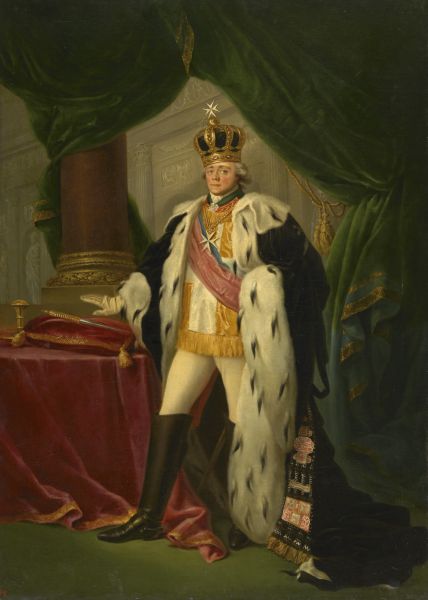|
|
Portrait of Emperor Paul I. 1798–1801

Tonchi Salvatore,
Oil on canvas
152 х 109
State Russian Museum
Пост.: 1930 из ГЭ
Annotation
Emperor Paul I (1754–1801) was the only son of Emperor Peter III and Empress Catherine the Great. In 1762 he was named heir to the throne and given the title of Tsesarevich. He received an excellent education and believed in the romantic ideals of enlightened absolutism, but was critical of the policies of Catherine the Great. He spent decades waiting for the power that his mother had usurped. He became emperor in 1796. His efforts were intended to be to the state’s benefit, but he often acted against common sense. At his coronation in Moscow in 1797 he promulgated the Establishment of the Imperial Family which laid down that accession to the throne should be by primogeniture in the male line. He reformed local government. He restricted the rights of the nobility and allowed corporal punishment to be used on them. Military reforms affected not only uniforms and equipment, but also training and the tactics of officers and soldiers, with an emphasis on the Prussian military school. In an effort to protect Russia from revolutionary ideas, he banned the import of books from France and tightened censorship. In 1798, he took on the title of Grand Master of the Knights of St John of Jerusalem, of Rhodes and of Malta (Hospitaller), and took it under his patronage. He was killed by conspirators in St Michael’s Castle during the night of 11–12 March 1801, but according to the official version he died of an apoplectic fit (a stroke).
Emperor Paul I is depicted in the robes of the Grand Master of the Hospitaller Order of Saint John of Jerusalem, of Rhodes and of Malta. He is wearing the black mantle of the Order with a white eight-pointed Maltese cross, and a golden dalmatic under the mantle. A black stole with embroidered scenes of Christ’s sufferings hangs from his shoulder. He is wearing the Maltese crown on his head and the golden chain of the Grand Master of the Hospitaller Order around his neck. On his chest is the blue ribbon of St Andrew and a crimson sash. The Grand Master’s regalia stand on a nearby table.
Author's Biography
Tonchi Salvatore
Tonchi, Salvatore (1756, Rome — 1844, Moscow)
Italian painter, portraitist. Studied art in Italy. Member of the Accademia de Forti in Rome (1792) and Accademia of Bologna (1793). Moved to St. Petersburg (1795). Moved in Moscow (1804) and married Princess Natalia Gagarina (1778–1832). Lived in Vladimir (1812–1814). Worked as inspector at the Kremlin Construction Department (from 1815). One of the founders of the School of Architecture. Retired in the rank of collegiate counselor (1842) after 25 years of service.

